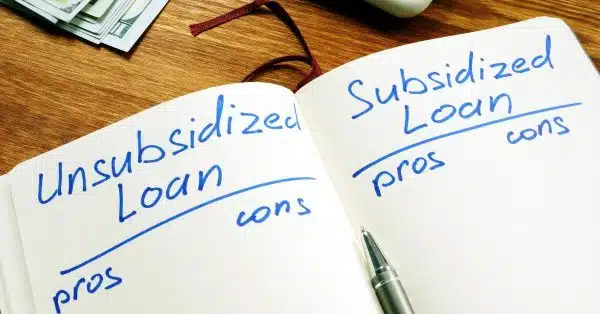What Is Student Loan Forgiveness?
Public Service Loan Forgiveness (PSLF) provides welcome relief from student loan debt for students choosing a career in public service.
No matter what level of debt they have, the remaining balance can be forgiven after 10 years (120 months) of on-time payments that are considered by the government to be affordable for their income level. Student loan forgiveness occurs after 10 years and not sooner.
What Types of Jobs Qualify for Public Service Loan Forgiveness?
When a student finishes college and gets a job, it’s not so much the job, but the employer that matters as qualifying for Public Service Loan Forgiveness.
They will need to work for a “qualifying employer.”
That is, a government organization at any level (federal, state, local, or tribal), a 501c3 non profit, or even a company with a government contract.
Since whether you earn Public Service Loan Forgiveness is more about the work the organization or company does than what the employee does, Public Service Loan Forgiveness is a potential option for anyone from business majors to medical associates.
Over one quarter of borrowers could qualify.
If your student has any inkling they might, they should contact the federal student loans servicer handling Public Service Loan Forgiveness to ask if the kind of employer they are considering work for post graduation qualifies.
Using the Employment Certification for Public Service Loan Forgiveness Form
you wouldn’t want to leave something as important as this to chance, it is imperative you make sure that you work for a qualified public service employer.
In order to do that, you will be required to fill out the Employment Certification for Public Service Loan Forgiveness Form.
This form will to keep track of your eligible employment and qualifying loan payments.
Keep in mind that this will be a joint effort on the part of you and your employer.
You will need to fill out some sections of the form on your own, and your employer will have to complete and sign one section before you submit the form.
Since some employers have their own forms, it’s best to check with them first for more information.
Qualifying for Public Service Loan Forgiveness by Repayment Plan, etc.
Once employment is verified, the next step is fulfilling the conditions of the plan.
The program requires 120 payments in either a standard or income-driven plan while working at a job for a qualifying employer.
There are two reason why it’s an income-driven plan.
First, there’s nothing left to forgive if you complete 10 years of payments on a standard repayment plan.
So, you would need a plan where payments are reduced.
Second, the purpose of the program is to help people who choose to work in public service, and generally work for a lower than usual income, to afford student loan payments.
Thus, how much you make compared to your loan balance is an important factor in whether the program is needed.
This is true for a doctor who borrowed $250,000 as much as a social worker who borrowed $40,000.
If your student decides to take a break from a job that qualifies for PSLF either to work elsewhere or for another reason such as staying home with a new child for a year or two, the payments made during that time period don’t count.
Payments counting towards requirements for PSLF can be resumed, however, if they return to work for a qualified employer.
Why Public Service Loan Forgiveness Can Be a Risky Proposition
In years past, the ugliness of red tape would often rear its head, and those who worked for what they assumed to be qualifying employers were still unsure as to whether they would be eligible for Public Student Loan Forgiveness.
Back then, an employee didn’t necessarily know whether they qualified until after they already made several years of payments.
Over the last few years a public service student loan forgiveness form (a pslf form) was added that establishes a contract the second a graduate signs up.
Public Service Loan Forgiveness is a more stable program because of this change.
While this sounds rather dependable, it still doesn’t guarantee that the program will exist in the future.
There is still a precariousness to the stability of the program…Congress can get rid of it at any time or limit the use of the program to higher income individuals such as doctors or lawyers.
Another reason the program is not necessarily a game changer is that there is a salary cap.
To get on income-driven repayment, you’ll have to apply every year.
That way, Federal Student Aid can make sure your income qualifies you to stay on this plan.
If your salary increases, you may be dropped from the plan and you would have to go back to regular repayment.
This would make the years that you were on the plan basically for nought.
How Should a Student Use the Program?
Aside from the fact that once should not assume the PSLF program will last indefinitely, it is still a plan that will help a certain group of graduates…for now.
It is recommended that you borrow an amount that you can at least afford to borrow based on a 30-year repayment plan.
If PSLF still exists upon graduation, look at it as a nice surprise.
Also, take at it as a signal to incentivize yourself to look for local programs that can help.
For instance, there may be a state loan forgiveness program for teachers or nurses.
Students can also search for more private and school scholarships by choice of major in order to reduce costs now.
IMPORTANT NOTE: There may be parents of current students out there who had previously applied for Public Service Loan Forgiveness and had their application denied.
This group may qualify for a new opportunity under the Consolidated Appropriations Act, 2018.
This opportunity, known as Temporary Expanded Public Service Loan Forgiveness (TEPSLF), adds new conditions under which you may be qualified to receive public service loan forgiveness of their own Direct Loan.
They should also call their student loan servicer to see if they now qualify.
Quick tips for evaluating Public Service Loan Forgiveness
- Don’t count on it being available post graduation
- Do understand which employers qualify by calling the PSLF servicer
- Calculate payments for a 30-year repayment plan payment so the student can afford repayment whether or not PSLF exists in the future
- Look for scholarships in the field to reduce costs now
- View PSLF as a nice perk of a career choice if it does exist when the student graduates.
Bottom Line
The Public Service Loan Forgiveness Program is a boon for those students who are or expect to be employed by qualifying employers.
The forgiveness applies only to loans directly issued by the government (federal loans).
The benefits of the program, however, are tenuous since its existence is at the mercy of Congress, who can cut it off at any time.
So, those for whom the program will work should do everything they can now to facilitate the repayment of their loans.
And if the program still exists when they graduate, it will be a great surprise.
CONNECT WITH OTHER PARENTS TRYING TO FIGURE OUT
HOW TO PAY FOR COLLEGE
JOIN ONE OF OUR FACEBOOK GROUPS:
HOW TO FIND MERIT SCHOLARSHIPS




